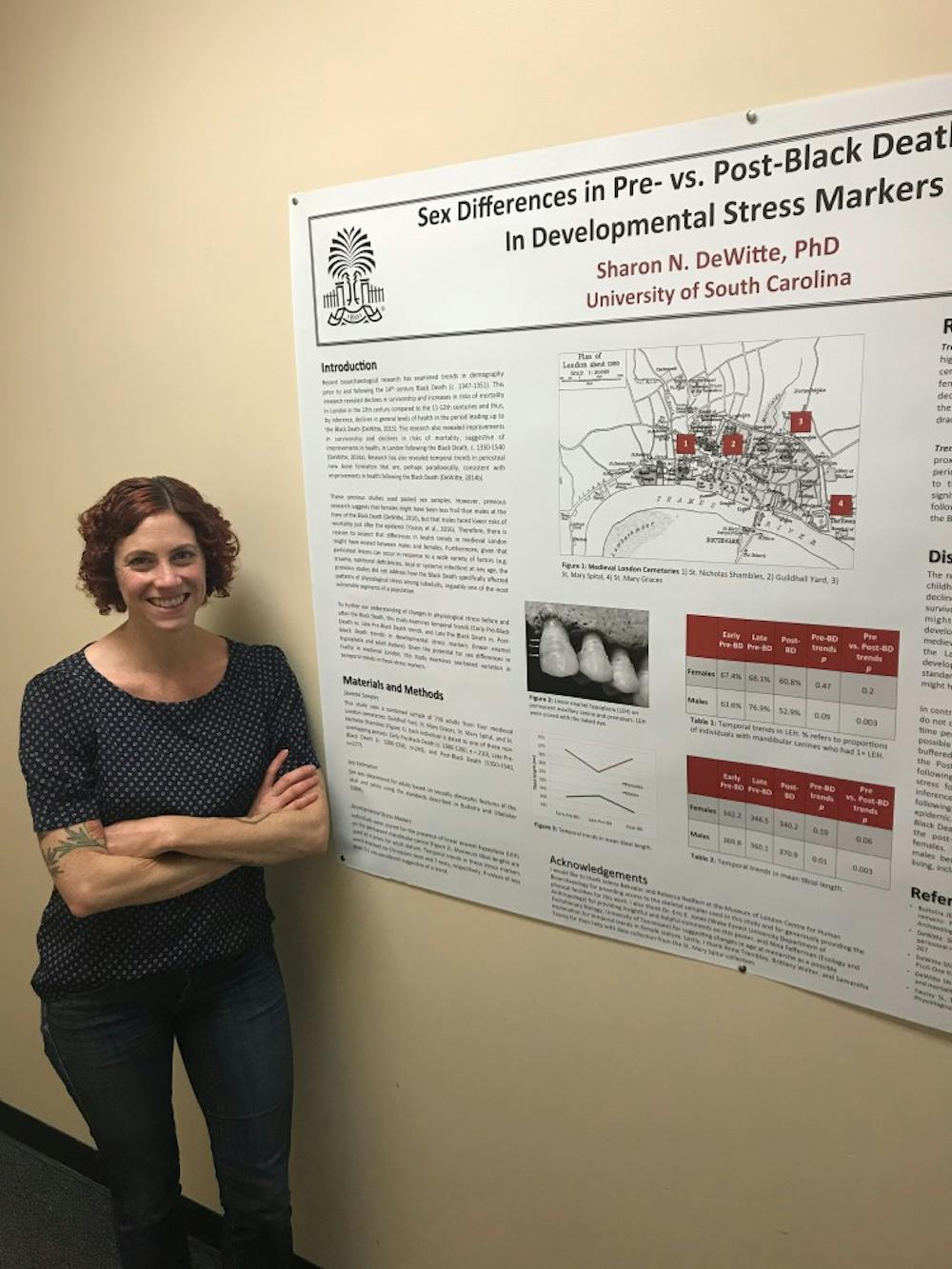The Black Death wiped out tens of millions of people in medieval Europe between 1347 and 1353. “There were people that would’ve lost every single person that they knew,” Sharon DeWitte, a professor of anthropology and anatomy and physiology at USC, said.
The disease is thought to have originated in Western Asia before being carried by fleas with the Yersinia pestis bacterium to Europe along trading routes.
DeWitte uses skeletal remains to study the health and demographic patterns of medieval European populations before and after the Black Death. This skeletal information can allow her to determine someone’s gender, how old that person was when he or she died and, by measuring the bones, she can get an idea of how tall or short a person was which can be indicative of malnutrition or disease during childhood.
Today, the bubonic plague kills only 2 to 3 percent of affected populations even in the absence of antibiotics. For a while, people believed that the strain of bacteria responsible for this incredible mortality rate must be genetically different from the modern plague. However, collaborators of DeWitte’s have completely reconstructed the genome of 14th-century plague and have found that there are no differences that would have caused the plague to have such a low survivorship.
“I think what the evidence is suggesting is that the population was particularly vulnerable to a new disease,” DeWitte said.
Every summer DeWitte travels to the Museum of London where they have over 20,000 skeletal remains from the Neolithic period through the 1800s. Here, she collects data on the age, sex and various other pathologies of people who died before, during and after the Black Death in Europe.
This data allows her to focus her research on trends in the health of individuals and populations of this era. Leading up to the Black Death there were shifts in climate patterns and cattle diseases that led to food shortages and famines across Europe.
"There’s an interaction between famine and infectious disease. People that were malnourished were more vulnerable to disease that existed at the time so when the Black Death was introduced ... they didn’t have the immune system to fight off a new infection,” DeWitte said.
"I'm becoming increasingly convinced in [that] what I'm seeing in terms of vulnerability to the Black Death is associated with basic inequalities and access to resources," DeWitt added. She states that we have parallels in current populations in regards to inequalities and hopes that her work will motivate people to look at these vulnerabilities and help to reduce deaths for possible epidemics in the future.

